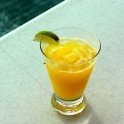-
Posts
20,155 -
Joined
-
Last visited
-
Days Won
839
Reputation Activity
-
 twangster got a reaction from heffy2 in Ovation Goes South to Hawaii Sept. 20, 2019
twangster got a reaction from heffy2 in Ovation Goes South to Hawaii Sept. 20, 2019
After 45 minutes in the water we were given some turkey wraps, chips and water or local fruit juices. We were getting ready to leave when a pair of dolphins visited.
On the ride back to Maui more dolphins came by.
Pretty cool seeing them up close like this.
-
 twangster got a reaction from Eliza in Ovation Goes South to Hawaii Sept. 20, 2019
twangster got a reaction from Eliza in Ovation Goes South to Hawaii Sept. 20, 2019
Wind chill, plus I wear gloves in Canada. Those July 1st celebrations are known to cause frostbite.
-
 twangster got a reaction from heffy2 in Ovation Goes South to Hawaii Sept. 20, 2019
twangster got a reaction from heffy2 in Ovation Goes South to Hawaii Sept. 20, 2019
Finally it was time for the main event.
As the sun dropped lower it reappeared from behind the clouds.
It was pretty magical and soulful.
With that it was time to regain feeling in my frozen fingers so we boarded our bus for the drive to our restaurant just over an hour away.
-
 twangster got a reaction from Sweety in Ovation Goes South to Hawaii Sept. 20, 2019
twangster got a reaction from Sweety in Ovation Goes South to Hawaii Sept. 20, 2019
Next stop was at one of many National Parks on the island, this one is the Kahuku Unit.
Just to set expectations, there are no active eruptions or lava flows currently. This isn't a site where you will look down into an active volcano or walk near hot, red molten lava flows. Much of the Volcano National Park remains closed after the 2018 eruption of Kīlauea caldera. The Kahuku unit is far enough South of the area that erupted that it can remain open.
Knowing how the island is entirely volcanic in origin and how long it takes plant life to grow it's amazing to see an abundance of plant life anywhere on the island.
Our bus takes us to the site of am 1868 lava flow that produced tubes. Lava tubes are produced when slow moving flows begin to cool on the surface while the molten lava continues to flow below the surface.
This results in a skin or tube like structure that hardens and becomes solid while the molten lava continues to flow eventually draining out of the tube leaving large cave like cavities.
In some cases these can be large enough to walk into or in this area to live in. Historically the native Hawaiian tribes were somewhat a hostile people often at war with other tribes. Small battles resulted in some winners and some losers. Warriors defeated in battle would take refuge in these tubes in shame of losing a battle.
This is a marker setup by natives that sometime ago came in search of their ancestors. Finding tubes that displayed signs of life these markers were a means to come back year after year to pay tribute to ancestors in a constantly changing island topography. Hawaii is home to an average of 84 earthquakes annually since it resides on fault lines. Between new lava flows and earthquakes areas like this can change overtime so the markers help them to return to places that have special meaning to them.
There is one tree that is critical in the lifecycle of plant growth on lava. The Ohia tree has special enzymes that can break down lava and allow it's root to penetrate. Over time (hundreds of years) and with enough trees an area can develop a soil that allows other plants to begin their life cycle.
The legend of the Ohia tree is founded in Hawaiian folklore. It is said the Pele, the goddess and fire and volcanoes met a warrior named Ohia that she wanted to marry. Ohia had already pledged his love to Lehua. Pele was so enraged by his refusal she turned the warrior into a tree and stuck him into the lava. Lehue was so distraught that other gods took pity on her and turned her into a flower on the Ohia tree so that the lovers could eternally be joined together.
It is said that if anyone plucks the red flower from the Ohia tree it will rain that day as you are separating the lovers, Lehue and Ohia.
The flower is loaded with seeds that winds will spread allowing more Ohia trees to seed and take root.
It's not hard to imagine this back in 1868 as molten laving slow flowing down off this hilltop towards the sea.
High in iron the lava is literally rusting turning a rust brown color in the process.
This wall was built to separate and define the boundary between two native tribes in the late 1800's.
-
 twangster got a reaction from Srp431 in Ovation Goes South to Hawaii Sept. 20, 2019
twangster got a reaction from Srp431 in Ovation Goes South to Hawaii Sept. 20, 2019
The tour continues with our first sitings of old lava flows. Not the Kraken variety.
Driving along the highway everything looks normal then you come across a barren section of land where it looks like someone has tilled the land but really it's a lava flow from decades or hundreds of years ago. In some cases plant life is starting to make roots.
The brown area may look like dirt but it isn't. It's more lava rock.
There are three predominant types of lava found on Hawaii. Most of this is an example of aa lava, a very fast moving form that causes the flow to crack and break into pieces.
This is the big island. The whole island was like this once but in areas that haven't received new flows a soil has formed over hundreds or thousands of years. The isn't soil very deep though and lava rock like you see here is never far from the surface. That makes it hard for trees to take root or to plant electric poles like this one. This is an example of pahoehoe lava and it moves slower allowing a skin to form that protects the molten lava within so it doesn't crack in the same manner as aa lava.
The side of the lava exposed to air oxidized and became the porous lava rock we use in our BBQ grills while the lava flow further from the surface cools at a different rate that often causes it to crack and splinter.
Note the brown lava rock versus the black lava rock. More on that later.
The Southernmost point in the US in the distance.
To give you an idea how slowly plant growth comes back there are three lava flows in this area. The oldest flow is brown in color now because of the high iron content. It basically rusts over time turning the lava rock into a color that looks like soil. It's not soil though, just more lava rock.
The brown lava rock is believed to be from a flow between 750 and 1,500 years ago. The darker "newer" lava flow is from 1907.
Note there are no trees on the darker flow, only the 1,000 year old lava has plant life.
This one species of tree has adapted to life on lava and it produces an enzyme that can break down the lava rock and allow its root to penetrate the rock. The tree and the red flower that blooms on them have a storied beginning in Hawaiian folklore. More on that later.
This lava flow rock is very sharp. If you fell down it would hurt and probably cut you. This is what the native population had to deal with prior to modern times. No roads, no cars but to navigate Hawaii the native population had to deal with navigating across these types of flows all over the island for hundreds of years.
-
 twangster got a reaction from Traveler in Ovation Goes South to Hawaii Sept. 20, 2019
twangster got a reaction from Traveler in Ovation Goes South to Hawaii Sept. 20, 2019
Next stop was at one of many National Parks on the island, this one is the Kahuku Unit.
Just to set expectations, there are no active eruptions or lava flows currently. This isn't a site where you will look down into an active volcano or walk near hot, red molten lava flows. Much of the Volcano National Park remains closed after the 2018 eruption of Kīlauea caldera. The Kahuku unit is far enough South of the area that erupted that it can remain open.
Knowing how the island is entirely volcanic in origin and how long it takes plant life to grow it's amazing to see an abundance of plant life anywhere on the island.
Our bus takes us to the site of am 1868 lava flow that produced tubes. Lava tubes are produced when slow moving flows begin to cool on the surface while the molten lava continues to flow below the surface.
This results in a skin or tube like structure that hardens and becomes solid while the molten lava continues to flow eventually draining out of the tube leaving large cave like cavities.
In some cases these can be large enough to walk into or in this area to live in. Historically the native Hawaiian tribes were somewhat a hostile people often at war with other tribes. Small battles resulted in some winners and some losers. Warriors defeated in battle would take refuge in these tubes in shame of losing a battle.
This is a marker setup by natives that sometime ago came in search of their ancestors. Finding tubes that displayed signs of life these markers were a means to come back year after year to pay tribute to ancestors in a constantly changing island topography. Hawaii is home to an average of 84 earthquakes annually since it resides on fault lines. Between new lava flows and earthquakes areas like this can change overtime so the markers help them to return to places that have special meaning to them.
There is one tree that is critical in the lifecycle of plant growth on lava. The Ohia tree has special enzymes that can break down lava and allow it's root to penetrate. Over time (hundreds of years) and with enough trees an area can develop a soil that allows other plants to begin their life cycle.
The legend of the Ohia tree is founded in Hawaiian folklore. It is said the Pele, the goddess and fire and volcanoes met a warrior named Ohia that she wanted to marry. Ohia had already pledged his love to Lehua. Pele was so enraged by his refusal she turned the warrior into a tree and stuck him into the lava. Lehue was so distraught that other gods took pity on her and turned her into a flower on the Ohia tree so that the lovers could eternally be joined together.
It is said that if anyone plucks the red flower from the Ohia tree it will rain that day as you are separating the lovers, Lehue and Ohia.
The flower is loaded with seeds that winds will spread allowing more Ohia trees to seed and take root.
It's not hard to imagine this back in 1868 as molten laving slow flowing down off this hilltop towards the sea.
High in iron the lava is literally rusting turning a rust brown color in the process.
This wall was built to separate and define the boundary between two native tribes in the late 1800's.
-
 twangster got a reaction from Traveler in Ovation Goes South to Hawaii Sept. 20, 2019
twangster got a reaction from Traveler in Ovation Goes South to Hawaii Sept. 20, 2019
The tour continues with our first sitings of old lava flows. Not the Kraken variety.
Driving along the highway everything looks normal then you come across a barren section of land where it looks like someone has tilled the land but really it's a lava flow from decades or hundreds of years ago. In some cases plant life is starting to make roots.
The brown area may look like dirt but it isn't. It's more lava rock.
There are three predominant types of lava found on Hawaii. Most of this is an example of aa lava, a very fast moving form that causes the flow to crack and break into pieces.
This is the big island. The whole island was like this once but in areas that haven't received new flows a soil has formed over hundreds or thousands of years. The isn't soil very deep though and lava rock like you see here is never far from the surface. That makes it hard for trees to take root or to plant electric poles like this one. This is an example of pahoehoe lava and it moves slower allowing a skin to form that protects the molten lava within so it doesn't crack in the same manner as aa lava.
The side of the lava exposed to air oxidized and became the porous lava rock we use in our BBQ grills while the lava flow further from the surface cools at a different rate that often causes it to crack and splinter.
Note the brown lava rock versus the black lava rock. More on that later.
The Southernmost point in the US in the distance.
To give you an idea how slowly plant growth comes back there are three lava flows in this area. The oldest flow is brown in color now because of the high iron content. It basically rusts over time turning the lava rock into a color that looks like soil. It's not soil though, just more lava rock.
The brown lava rock is believed to be from a flow between 750 and 1,500 years ago. The darker "newer" lava flow is from 1907.
Note there are no trees on the darker flow, only the 1,000 year old lava has plant life.
This one species of tree has adapted to life on lava and it produces an enzyme that can break down the lava rock and allow its root to penetrate the rock. The tree and the red flower that blooms on them have a storied beginning in Hawaiian folklore. More on that later.
This lava flow rock is very sharp. If you fell down it would hurt and probably cut you. This is what the native population had to deal with prior to modern times. No roads, no cars but to navigate Hawaii the native population had to deal with navigating across these types of flows all over the island for hundreds of years.
-
 twangster got a reaction from Guy Gadwa in Ovation Goes South to Hawaii Sept. 20, 2019
twangster got a reaction from Guy Gadwa in Ovation Goes South to Hawaii Sept. 20, 2019
Our next stop was at Bay View Farms where among other things they have 10 acres of coffee trees. If anyone is a die hard coffee lover they've probably heard of Kona coffee.
Our driver and guide Dastan talking about the process of picking coffee cherries and the tree itself. They have to be picked by hand and it's a lot of work for little pay.
The farm has other crops also planted.
While the Papaya and Pineapple are nice, this stop is all about coffee.
Coffee cherries have to be picked when they are red, not before and not long after they have turned color.
We were welcomed to sample a medium and dark roast variety of their coffee.
The farm has beautiful grounds with plenty to see.
We were warned when buying Kona coffee to avoid anything that said "blend" but insist on 100% Kona coffee. A blend could have just 1 or 2 Kona beans and the rest something else where as 100% Kona coffee is just that.
Very interesting stop and of course I had to buy some Kona coffee right from the source.
-
 twangster got a reaction from Ken23 in Ovation Goes South to Hawaii Sept. 20, 2019
twangster got a reaction from Ken23 in Ovation Goes South to Hawaii Sept. 20, 2019
After 45 minutes in the water we were given some turkey wraps, chips and water or local fruit juices. We were getting ready to leave when a pair of dolphins visited.
On the ride back to Maui more dolphins came by.
Pretty cool seeing them up close like this.
-
 twangster got a reaction from Guy Gadwa in Ovation Goes South to Hawaii Sept. 20, 2019
twangster got a reaction from Guy Gadwa in Ovation Goes South to Hawaii Sept. 20, 2019
Day 9 - Lahaina, Maui
Still in Lahaina with nothing but a few hours sleep between excursions it was soon time to meet my excursions. This time with an early morning excursion we met in the theater on board and were escorted down as a group to a tender.
There is a narrow channel through the reef with surfers on both sides. Here they are waiting to ride the next good swell as our tender made it's way through the reef.
Today's excursion is Molokini Zodiak Snorkeling. Our group of 51 boarded a bus for a 25 minute drive to a marina where we were divided into two groups. Our boat held 30 while the other boat could only hold 21.
The other boat.
Our Captain's plan was to head down the coast towards the Southern part of the island but a late summer South swell was causing rough surf so the waters were too rough to snorkel.
We did see some turtles though.
With snorkeling prospects low we headed over to the Molokini crater.
Approaching from the back side the crater walls with waves breaking against them were quite breathtaking.
Coming around to the front side of the crater you can see that the wall of the crater on this side is low into the ocean so you boat right into the crater itself.
It was a popular spot for boat trips today.
The walls of the crater really show the layers that formed it over time.
This would be our snorkel spot today, well sheltered from the wind.
-
 twangster got a reaction from Ken23 in Ovation Goes South to Hawaii Sept. 20, 2019
twangster got a reaction from Ken23 in Ovation Goes South to Hawaii Sept. 20, 2019
Hilton Vancouver Airport
Free shuttle from the airport. I don't recall booking a Junior King Suite but that's what they gave me. Separate sitting area from the bedroom.
Bedroom.
Bathroom.
I walked over the the Richmond Center shopping mall and their food court for dinner.
-
 twangster got a reaction from Guy Gadwa in Ovation Goes South to Hawaii Sept. 20, 2019
twangster got a reaction from Guy Gadwa in Ovation Goes South to Hawaii Sept. 20, 2019
The magical views weren't done with us. The drive back down from the summit was pretty special as well.
We re-entered the cloud layer and continued our descent towards sea level.
-
 twangster got a reaction from Ken23 in Ovation Goes South to Hawaii Sept. 20, 2019
twangster got a reaction from Ken23 in Ovation Goes South to Hawaii Sept. 20, 2019
Today's excursion is called the Haleakalā Summit Sunset Experience.
Our excursion met and we boarded a small shuttle type bus where we met our driver and guide. We drove around 45 minutes to their business where we could get a coffee, snack, use the restroom and get a jacket for the summit.
The summit is around 10,000 feet in elevation and the weather is very cool up there. Today it was 41°F. Jackets were highly recommended due to the strong winds and wind chill.
Menus were passed around for a post-summit dinner. We picked our entree which was called into the restaurant prior to our arrival later in the evening.
Our bus ride continued up through changing weather and ecology. Entering the Haleakalā National Park we stopped at the visitor's center for a restroom break and interesting talk about the type of plants in this area. At this point we were above the clouds at around 7,000 feet.
We learned that many plants found here are endemic to Hawaii - they only exist here and nowhere else in the world. Some are unique to each island and are not even found on other Hawaiian islands.
The Silversword is an example of one unique and exclusive to Maui.
We continue our drive towards the summit first stopping at a viewing area halfway there.
The sun was getting lower on the horizon.
Our guide tells us the story of Pele and Maui, both gods in Hawaiian culture. Pele is the goddess of volcanoes and fire and the creator of the Hawaiian Islands. Maui was responsible for the mountains rising from the ocean floor.
This area includes a viewing platform for a view into the crater behind the summit.
Cinder cones were easy to spot on the crater floor. These are from past eruptions. Scientists believe Haleakalā has erupted at least 7 times over the past 1,000 years and they predict she will erupt again at some point.
From here we proceeded to the summit.
Another view of the crater from the visitor's center at the summit.
Not quite sunset yet the sun popped behind a cloud. Looking closely you can see the shoreline of Maui before us.
-
 twangster got a reaction from Eliza in Ovation Goes South to Hawaii Sept. 20, 2019
twangster got a reaction from Eliza in Ovation Goes South to Hawaii Sept. 20, 2019
I wanted to wander a bit before my 2pm excursion that met on the island.
Clouds have formed over much of the island in just a few hours.
Here is the crew fixing the ramp after a swell knocked it off it's normal position.
The boats themselves are very comfortable with padded seating. I think the capacity is 170.
Off and away we go...
The port area where we landed.
Walking along the shore for a bit.
Very close by is a street with shops.
It was very hot, over 31°C or almost 90° F. I though something to cool me down was in order. Conveniently located across from the port area is a hotel with bar.
Fortunately I found a Big Wave Golden Ale to cool me down.
-
 twangster got a reaction from stephenkurucz in New Billboard spotted at CocoCay
twangster got a reaction from stephenkurucz in New Billboard spotted at CocoCay
That photo speaks volumes... about the need for some better photoshop skills :)
-
 twangster got a reaction from ashonthesea in Navigating around the hurricanes. 4 night Navigator Cruise 9/23-9/27
twangster got a reaction from ashonthesea in Navigating around the hurricanes. 4 night Navigator Cruise 9/23-9/27
You going to lay it on the kids all at once or surprise them with Disney at the end of the cruise?
"Okay kids get in the rental car, we have a very long drive home".
"I think I'm lost, we ended up at.... DISNEY WORLD!!!!!".
LOL
-
 twangster got a reaction from DDaley in New Billboard spotted at CocoCay
twangster got a reaction from DDaley in New Billboard spotted at CocoCay
That photo speaks volumes... about the need for some better photoshop skills :)
-
 twangster got a reaction from Kerry in New Billboard spotted at CocoCay
twangster got a reaction from Kerry in New Billboard spotted at CocoCay
That photo speaks volumes... about the need for some better photoshop skills :)
-
 twangster got a reaction from Pima1988 in New Billboard spotted at CocoCay
twangster got a reaction from Pima1988 in New Billboard spotted at CocoCay
That photo speaks volumes... about the need for some better photoshop skills :)
-
 twangster got a reaction from PRebecca in Ovation Goes South to Hawaii Sept. 20, 2019
twangster got a reaction from PRebecca in Ovation Goes South to Hawaii Sept. 20, 2019
That the insurance division of the farm. He told me how easy it was to save hundreds of dollars by switching to gecko.
-
 twangster got a reaction from Guy Gadwa in Ovation Goes South to Hawaii Sept. 20, 2019
twangster got a reaction from Guy Gadwa in Ovation Goes South to Hawaii Sept. 20, 2019
After 45 minutes in the water we were given some turkey wraps, chips and water or local fruit juices. We were getting ready to leave when a pair of dolphins visited.
On the ride back to Maui more dolphins came by.
Pretty cool seeing them up close like this.
-
 twangster got a reaction from iluvwineandtravel in Ovation Goes South to Hawaii Sept. 20, 2019
twangster got a reaction from iluvwineandtravel in Ovation Goes South to Hawaii Sept. 20, 2019
Quick update.
I've been busy and it will take some time to process my pictures and post them, but for now here is a tease from nearly 10,000' above sea level from a dormant volcano on Maui.
-
 twangster got a reaction from PRebecca in Ovation Goes South to Hawaii Sept. 20, 2019
twangster got a reaction from PRebecca in Ovation Goes South to Hawaii Sept. 20, 2019
Finally it was time for the main event.
As the sun dropped lower it reappeared from behind the clouds.
It was pretty magical and soulful.
With that it was time to regain feeling in my frozen fingers so we boarded our bus for the drive to our restaurant just over an hour away.
-
 twangster got a reaction from Guy Gadwa in Ovation Goes South to Hawaii Sept. 20, 2019
twangster got a reaction from Guy Gadwa in Ovation Goes South to Hawaii Sept. 20, 2019
The tour continues with our first sitings of old lava flows. Not the Kraken variety.
Driving along the highway everything looks normal then you come across a barren section of land where it looks like someone has tilled the land but really it's a lava flow from decades or hundreds of years ago. In some cases plant life is starting to make roots.
The brown area may look like dirt but it isn't. It's more lava rock.
There are three predominant types of lava found on Hawaii. Most of this is an example of aa lava, a very fast moving form that causes the flow to crack and break into pieces.
This is the big island. The whole island was like this once but in areas that haven't received new flows a soil has formed over hundreds or thousands of years. The isn't soil very deep though and lava rock like you see here is never far from the surface. That makes it hard for trees to take root or to plant electric poles like this one. This is an example of pahoehoe lava and it moves slower allowing a skin to form that protects the molten lava within so it doesn't crack in the same manner as aa lava.
The side of the lava exposed to air oxidized and became the porous lava rock we use in our BBQ grills while the lava flow further from the surface cools at a different rate that often causes it to crack and splinter.
Note the brown lava rock versus the black lava rock. More on that later.
The Southernmost point in the US in the distance.
To give you an idea how slowly plant growth comes back there are three lava flows in this area. The oldest flow is brown in color now because of the high iron content. It basically rusts over time turning the lava rock into a color that looks like soil. It's not soil though, just more lava rock.
The brown lava rock is believed to be from a flow between 750 and 1,500 years ago. The darker "newer" lava flow is from 1907.
Note there are no trees on the darker flow, only the 1,000 year old lava has plant life.
This one species of tree has adapted to life on lava and it produces an enzyme that can break down the lava rock and allow its root to penetrate the rock. The tree and the red flower that blooms on them have a storied beginning in Hawaiian folklore. More on that later.
This lava flow rock is very sharp. If you fell down it would hurt and probably cut you. This is what the native population had to deal with prior to modern times. No roads, no cars but to navigate Hawaii the native population had to deal with navigating across these types of flows all over the island for hundreds of years.
-
 twangster got a reaction from JLMoran in Ovation Goes South to Hawaii Sept. 20, 2019
twangster got a reaction from JLMoran in Ovation Goes South to Hawaii Sept. 20, 2019
The tour continues with our first sitings of old lava flows. Not the Kraken variety.
Driving along the highway everything looks normal then you come across a barren section of land where it looks like someone has tilled the land but really it's a lava flow from decades or hundreds of years ago. In some cases plant life is starting to make roots.
The brown area may look like dirt but it isn't. It's more lava rock.
There are three predominant types of lava found on Hawaii. Most of this is an example of aa lava, a very fast moving form that causes the flow to crack and break into pieces.
This is the big island. The whole island was like this once but in areas that haven't received new flows a soil has formed over hundreds or thousands of years. The isn't soil very deep though and lava rock like you see here is never far from the surface. That makes it hard for trees to take root or to plant electric poles like this one. This is an example of pahoehoe lava and it moves slower allowing a skin to form that protects the molten lava within so it doesn't crack in the same manner as aa lava.
The side of the lava exposed to air oxidized and became the porous lava rock we use in our BBQ grills while the lava flow further from the surface cools at a different rate that often causes it to crack and splinter.
Note the brown lava rock versus the black lava rock. More on that later.
The Southernmost point in the US in the distance.
To give you an idea how slowly plant growth comes back there are three lava flows in this area. The oldest flow is brown in color now because of the high iron content. It basically rusts over time turning the lava rock into a color that looks like soil. It's not soil though, just more lava rock.
The brown lava rock is believed to be from a flow between 750 and 1,500 years ago. The darker "newer" lava flow is from 1907.
Note there are no trees on the darker flow, only the 1,000 year old lava has plant life.
This one species of tree has adapted to life on lava and it produces an enzyme that can break down the lava rock and allow its root to penetrate the rock. The tree and the red flower that blooms on them have a storied beginning in Hawaiian folklore. More on that later.
This lava flow rock is very sharp. If you fell down it would hurt and probably cut you. This is what the native population had to deal with prior to modern times. No roads, no cars but to navigate Hawaii the native population had to deal with navigating across these types of flows all over the island for hundreds of years.









